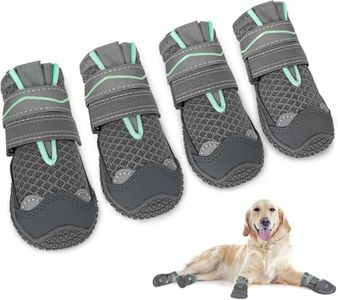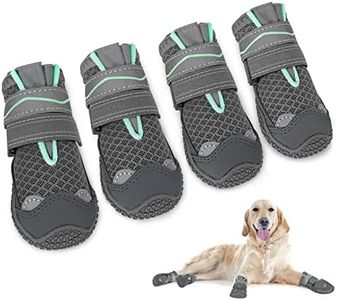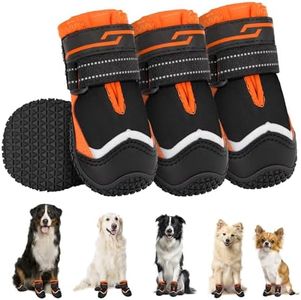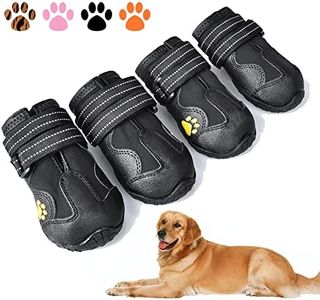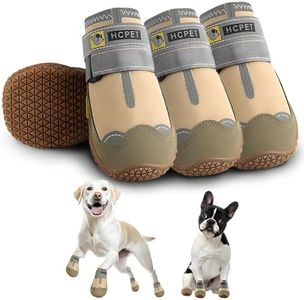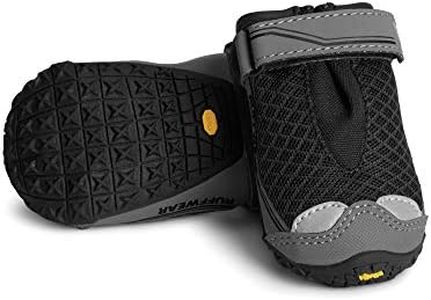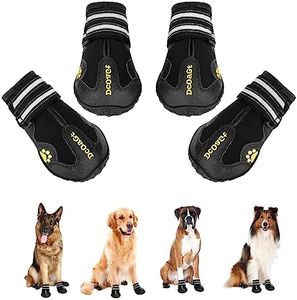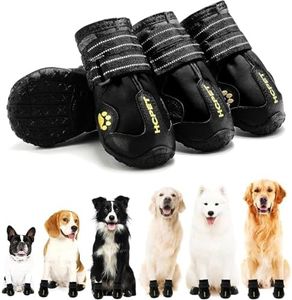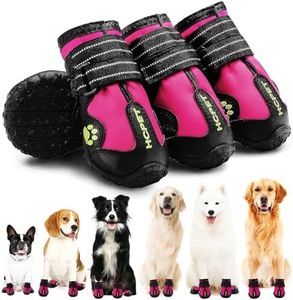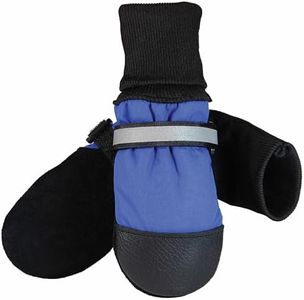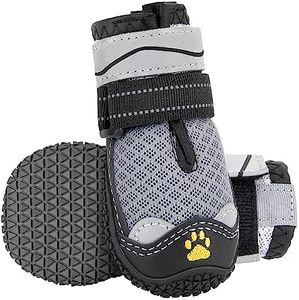We Use CookiesWe use cookies to enhance the security, performance,
functionality and for analytical and promotional activities. By continuing to browse this site you
are agreeing to our privacy policy
10 Best Dog Booties
From leading brands and best sellers available on the web.By clicking on a link to a third party's website, log data is shared with that third party.
Buying Guide for the Best Dog Booties
Picking the right dog booties can make a big difference for your pet’s comfort, safety, and health, especially in extreme weather or rough terrain. Dog booties protect your dog's paws from hot pavement, cold ice, sharp objects, or chemicals on the ground. When choosing dog booties, it’s important to think about your dog’s usual activities, paw size, and the surfaces they’ll be walking on. Making sure the fit is snug, but comfortable, helps prevent blisters or the boots slipping off. Carefully considering the main features will help you find the best option for your furry friend.Size & FitThe size and fit of dog booties are crucial because boots that are too tight can cause discomfort, while those that are too loose can fall off or cause your dog to trip. Sizes are usually measured by the width of your dog's paw, so you’ll want to follow the manufacturer’s sizing chart and measure your dog’s paw while standing for the most accurate reading. Small sizes suit toy breeds and puppies, medium sizes are best for most common adult breeds, and larger sizes are for big dogs like retrievers or shepherds. You should pick the size where the boot is snug but not restrictive—pay attention to reviews or guidance about fit if your dog is between sizes.
Material & DurabilityMaterial determines how long the booties last and what environments they suit best. Some are made of soft fabrics for comfort indoors, while others use tough rubber or waterproof materials for outdoor adventures. Soft materials are best for light use or indoor wear, such as protecting paws from allergies, while durable rubber or reinforced fabrics are better for hiking, rocky paths, or harsh weather. Choose the material based on how active your dog is and the surfaces they most often walk on.
Traction & Sole DesignThe sole of the bootie provides traction, which helps prevent slipping on smooth or icy surfaces. Some booties have textured or rubber soles for extra grip, while others may be smooth for indoor use. For winter, hiking, or walking on slippery terrain, a rugged sole with good traction is important. For indoor or short walks on smooth pavements, a lighter sole is usually enough. Think about where your dog will spend time and prioritize traction if falls are a concern.
Water Resistance & BreathabilityWater resistance keeps paws dry during rain or snow, while breathability allows air to circulate and prevents the paws from overheating or getting too sweaty. Some booties offer a balance between water resistance and ventilation. For rainy or snowy areas, waterproof booties are essential. For hot weather, look for breathable mesh materials. Your dog’s climate and the time of year will guide you in picking the right balance here.
Closure SystemThe closure system—whether hook-and-loop straps, zippers, or elastic bands—determines how securely the booties stay on and how easy they are to put on or take off. Secure straps or adjustable systems help avoid the booties slipping off during play, while being easy for you to fasten. For very active dogs, look for double straps or reinforced closures. Think about your dog’s patience and activity level, and your own comfort with securing the boots, when making your decision.
